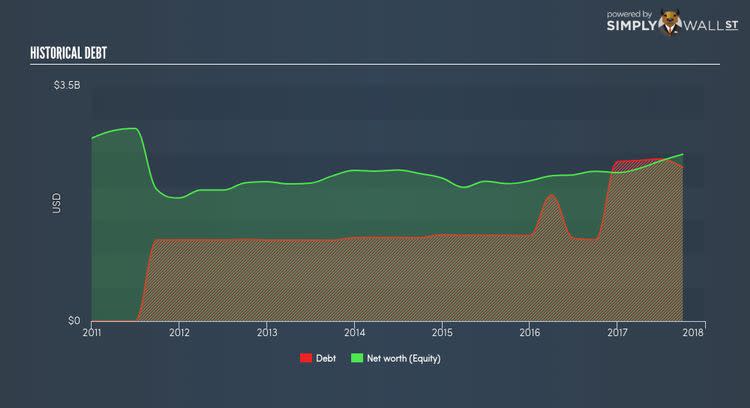Is Xylem Inc’s (XYL) Balance Sheet Strong Enough To Weather A Storm?

There are a number of reasons that attract investors towards large-cap companies such as Xylem Inc (NYSE:XYL), with a market cap of USD $11.84B. One such reason is its ‘too big to fail’ aura which gives it the appearance of a strong and healthy investment. However, investors may not be aware of the metrics used to measure financial health. The significance of doing due diligence on a company’s financial strength stems from the fact that over 20,000 companies go bankrupt in every quarter in the US alone. These factors make a basic understanding of a company’s financial position of utmost importance for a new investor. Here are a few basic checks that are good enough to have a broad overview of the company’s financial strength. Check out our latest analysis for Xylem
Is XYL’s level of debt at an acceptable level?
A debt-to-equity ratio threshold varies depending on what industry the company operates, since some requires more debt financing than others. Generally, large-cap stocks are considered financially healthy if its ratio is below 40%. For XYL, the debt-to-equity ratio is 92.18%, which means that it is a highly leveraged company. This is not a problem if the company has consistently grown its profits. But during a business downturn, as liquidity may dry up, making it hard to operate. We can test if XYL’s debt levels are sustainable by measuring interest payments against earnings of a company. Ideally, earnings should cover interest by at least three times, therefore reducing concerns when profit is highly volatile. In XYL’s case, its interest is excessively covered by its earnings as the ratio sits at 6.96x. This means lenders may be inclined to lend more money to the company, as it is seen as safe in terms of payback.
Does XYL generate enough cash through operations?
A simple way to determine whether the company has put debt into good use is to look at its operating cash flow against its debt obligation. This is also a test for whether XYL has the ability to repay its debt with cash from its business, which is less of a concern for large companies. XYL’s recent operating cash flow was 0.26 times its debt within the past year. This is a good sign, as over a quarter of XYL’s near term debt can be covered by its day-to-day cash income, which reduces its riskiness to its debtholders.
Next Steps:
Are you a shareholder? Although XYL’s debt level is towards the higher end of the spectrum, investors shouldn’t panic since its cash flow coverage seems adequate to meet obligations which means its debt is being efficiently utilised. Given that XYL’s financial situation may be different in the future, You should continue researching market expectations for XYL’s future growth on our free analysis platform.
Are you a potential investor? While investors should analyse the serviceability of debt, it shouldn’t be viewed in isolation of other factors. After all, debt financing is an important source of funding for companies seeking to grow through new projects and investments. So, I suggest you examine XYL’s Return on Capital Employed (ROCE) in order to see management’s track record at deploying funds in high-returning projects.
To help readers see pass the short term volatility of the financial market, we aim to bring you a long-term focused research analysis purely driven by fundamental data. Note that our analysis does not factor in the latest price sensitive company announcements.
The author is an independent contributor and at the time of publication had no position in the stocks mentioned.

